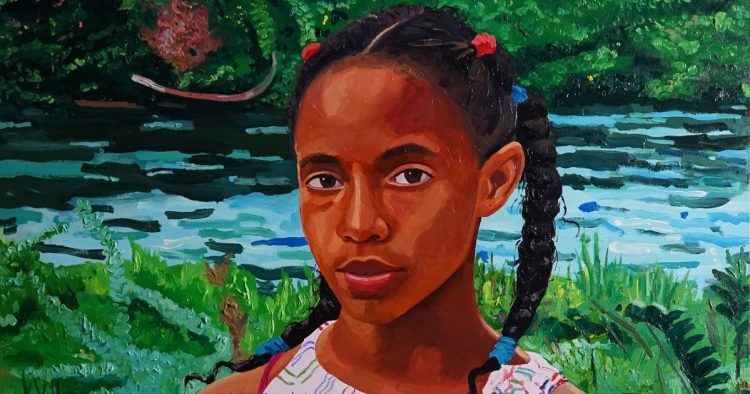Despite society’s best efforts to convince Black, brown, and other marginalized people that we don’t belong, we know we’ve always been here. Attempts to erase our contributions to this world and exclusion from resources that might help preserve our history cause us to run the risk of forgetting the rich legacies our ancestors left behind.
But one community is actively working to mitigate this erasure. The enclaves of Sag Harbor Hills, Azurest, and Nineveh Subdivisions, or SANS, are a group of historically Black communities in the Hamptons established during the 1940s. Although the Hamptons is typically viewed as a largely exclusive and white environment, there’s an abundant history of Black families building their own vacation communities in the region, despite restrictive housing policies during Jim Crow segregation. Although populous, these communities have faced the threat of physical erasure, as real estate developers are eager to buy up the coveted waterfront properties. In 2019, SANS was added to the National Register of Historic Places, thanks to the work of community leaders and organizers. To support these ongoing preservation efforts, nomadic art gallery Superposition has organized a new benefit exhibition in honor of the Eastville Community Historical Society in Sag Harbor—an institution founded in the 1980s that works to preserve the history of Black and Indigenous people in its community.
Titled “Resilience,” the show is curated by Superposition’s founder, Storm Ascher, and invites participating artists to respond visually to the idea of resilience. The exhibition includes framed prints, drawings, and paintings by a range of emerging and established artists including Derrick Adams, Renee Cox, Patrick Alston, and Tariku Shiferaw, among others. “Resilience” also features a set of mixed-media collages by interdisciplinary artist Helina Metaferia, both of which come from Metaferia’s “By Way of Care” series, and highlight the artist’s interest in honoring the overlooked labor of women activists and care workers.
Jeremy Dennis, Manitou Hill. Image courtesy of Superposition Gallery.
Chinaedu Nwadibia, Nails is in Her Blood. Image courtesy of Superposition Gallery.

Helina Metaferia, Crowning Care I. Image courtesy of Superposition Gallery.
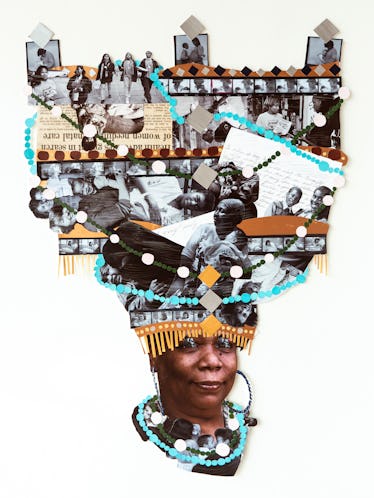
“I am interested in the poetics of change, and how people and society can transform in progressive, interdependent ways,” Metaferia told W Magazine. “Change requires a lot of flexibility and adaptability.” A dazzling mixed-media painting by Audrey Lyall, a pair of oil and graphite works by Naîla Opiangah, and an intricate work by Ambrose Rhapsody Murray that combines elements of quilting and weaving can also be found inside the gallery.
“The whole mission statement of Superposition since the beginning has been about not taking up space, but sharing space by expanding and contracting,” Ascher told W magazine, speaking to the gallery’s “focus on borrowed space.”
From left: “Resilience” curator Storm Ascher and Eastville Museum executive director Dr. Georgette Grier-Key at Haven’s Beach in Sag Harbor. Photographs courtesy of Superposition Gallery.
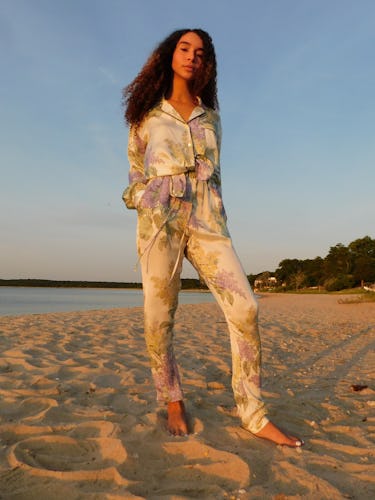
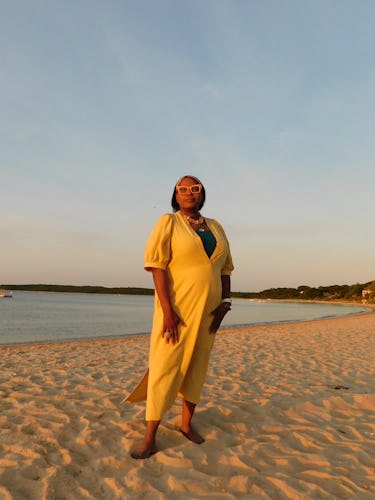
“Resilience” also marks Superposition’s four-year anniversary, and its second time partnering with Eastville Museum. Ascher, a resident of Sag Harbor since 2014, has been a supporter of the museum since 2020, when she began learning more about organizing efforts to conserve the history of Eastville and SANS communities through her own research. This led her to the institution’s executive director, Dr. Georgette Grier-Key, and in 2021, Superposition organized a pop-up benefit exhibition for its three-year anniversary alongside Eastville Museum.
“We’re expanding things because people really want to come and learn about the history here,” Dr. Grier-Key said. “We got involved with Storm when she came to us as a result of our preservation work and recognized the little acknowledgement that we received. It’s been so fruitful and rewarding for me to see that interest from the next generation.”
The funds raised from this year’s exhibition will benefit the museum’s archival research initiative and help establish the museum’s collection of contemporary artists and scholars who are currently engaging with the Hamptons in their work.
When asked about the exhibition’s theme, several featured artists spoke about the importance of balance in regards to practicing resilience. New York-based Eilen Itzel Mena recalled a recent conversation with a friend during which she was reminded of the importance of exercising tenacity in healthy and manageable ways. “I learned that through the use of resilience I can discover ways to feel grounded, peaceful and joyful,” Mena said. “The ultimate outcome should be to feel empowered.” Mena’s painting in the show, titled, Through the Mud There is Clear Water (Bayou), 2021 shows a black background decorated with natural elements and hands etched in white oil stick. The artwork is divided in two by the arch of a rainbow and reflects the artist’s vision of strength as both a feeling and a physical act.
Eilen Itzel Mena, Through the Mud There is Clear Water (Bayou). Image courtesy of Superposition Gallery.
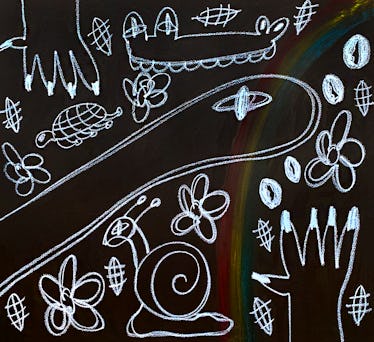
Others, like Michael A. Butler, whose family has served as a pillar of the Sag Harbor community for generations, emphasized the value of embracing resilience as a naturally occurring force. “Resilience often occurs on a subconscious level and we often don’t even need to think about the act,” Butler said via email. The artist’s acrylic painting, Calming an Angry Sea, 2019, depicts two men maneuvering through seemingly turbulent waters aboard a boat with a partially nude figure at the helm. Butler explained that he draws thematic inspiration from mythology, dreams, and lately, from oral histories of the local Sag Harbor community.
Michael Butler, Calming an Angry Sea. Image courtesy of Superposition Gallery.
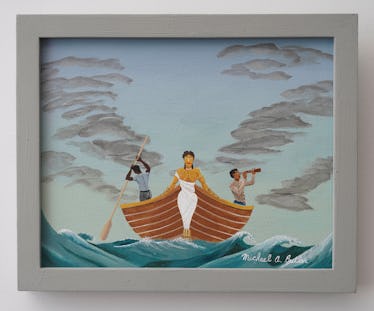
Paintings like Sparring, 2022 by artist Marcus Singleton offer a reflection of the impact that resilience has on the Black body. “One could say resilience is a way to describe Black people, in general,” Singleton said, continuing, “There are extremes on both ends. Blackness causes this polarizing effect with the rest of the world.”
Marcus Leslie Singleton, Sparring. Image courtesy of Superposition Gallery.
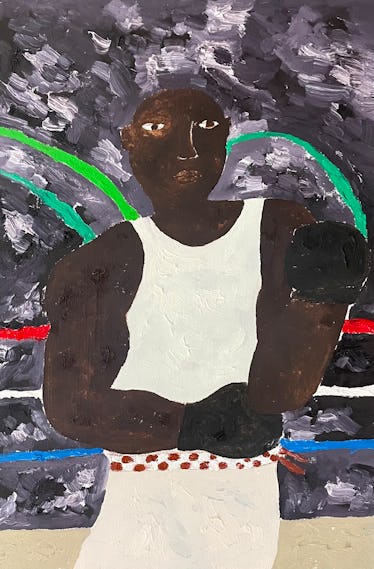
“I just knew that this would become an annual project,” Ascher said of her work in Eastville. “From our first exhibition in the Hamptons, ‘Celebrate Longevity,’ it’s been about the longevity of the gallery, the artist’s careers, but also the longevity of Black history here. And we’re just scratching the surface.”
Source by www.wmagazine.com
